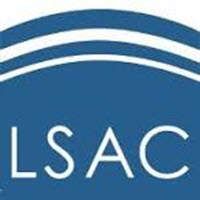Excerpt
Excerpted from LSAC Cautionary Policies Concerning LSAT (December 1999)(Full Document) (Editor Note: LSAC is the Law School Admission Council. It is responsible for the development, testing, and administration of the Law School Admission Test (LSAT).
 These Cautionary Policies are intended for those who set policy and criteria for law school admission, interpret LSAT scores and LSDAS reports, and use other LSAC services. The Policies are intended to inform the use of these services by law schools and to promote wise and equitable treatment of all applicants through their proper use.
These Cautionary Policies are intended for those who set policy and criteria for law school admission, interpret LSAT scores and LSDAS reports, and use other LSAC services. The Policies are intended to inform the use of these services by law schools and to promote wise and equitable treatment of all applicants through their proper use.
. . .
Because LSATs are administered under controlled conditions and each test form requires the same or equivalent tasks of everyone, LSAT scores provide a standard measure of an applicant’s proficiency in the well-defined set of skills included in the test. Comparison of a law school’s applicants both with other applicants to the same school and with all applicants who have LSAT scores thus becomes feasible. However, while LSAT scores serve a useful purpose in the admission process, they do not measure, nor are they intended to measure, all the elements important to success at individual institutions. LSAT scores must be examined in relation to the total range of information available about a prospective law student. It is in this context that the following restraints on LSAT score use are urged:
Do not use the LSAT score as a sole criterion for admission.
The LSAT should be used as only one of several criteria for evaluation and should not be given undue weight solely because its use is convenient. Those who set admission policies and criteria should always keep in mind the fact that the LSAT does not measure every discipline-related skill necessary for academic work, nor does it measure other factors important to academic success.
Evaluate the predictive utility of the LSAT at your school.
In order to assist in assuring that there is a demonstrated relationship between quantitative data used in the selection process and actual performance in your law school, such data should be evaluated regularly so that your school can use LSAT scores and other information more effectively. For this purpose Law School Admission Council annually offers to conduct correlation studies for member schools at no charge. Only by checking the relationship between LSAT scores, undergraduate grade-point average, and law school grades will schools be fully informed about how admission data, including test scores, can be used most effectively by that school.
Do not use LSAT scores without an understanding of the limitations of such tests.
Admission officers and members of admission committees should be knowledgeable about tests and test data and should recognize test limitations. Such limitations are set forth in the Law School Admission Reference Manual and are regularly discussed at workshops and conferences sponsored by Law School Admission Council.
Avoid improper use of cut-off scores.
Cut-off LSAT scores (those below which no applicants will be considered) are strongly discouraged. Such boundaries should be used only if the choice of a particular cut-off is based on a carefully considered and formulated rationale that is supported by empirical data, for example, one based on clear evidence that those scoring below the cut-off have substantial difficulty doing satisfactory law school work. Note that the establishment of a cut-off score should include consideration of the standard error of measurement in order to minimize distinctions based on score differences not sufficiently substantial to be reliable. Significantly, cut-off scores may have a greater adverse impact upon applicants from minority groups than upon the general applicant population. Normally, an applicant’s LSAT score should be combined with the undergraduate grade-point average before any determination is made of the applicant’s probability of success in law school.
Do not place excessive significance on score differences.
Scores should be viewed as approximate indicators rather than exact measures of an applicant’s abilities. Distinctions on the basis of LSAT scores should be made among applicants only when those score differences are reliable.
Do not misuse repeater scores.
LSAC research indicates that when an applicant has taken the LSAT more than once, the average of the scores has more predictive validity than any one of the separate scores unless special circumstances that undermine the predictive validity of one of the scores are present. In the absence of such circumstances, a decision to use one of the separate scores rather than the average is probably unwise.
Carefully evaluate LSAT scores earned under accommodated or nonstandard conditions.
LSAC has no data to demonstrate that scores earned under accommodated conditions have the same meaning as scores earned under standard conditions. Because the LSAT has not been validated in its various accommodated forms, accommodated tests are identified as nonstandard and an individual’s scores from accommodated tests are not averaged with scores from tests taken under standard conditions. The fact that accommodations were granted for the LSAT should not be dispositive evidence that accommodations should be granted once a test taker becomes a student. The accommodations needed for a one-day, multiple choice test may be different from those needed for law school coursework and examinations.
Avoid encouraging use of the LSAT for other than admission functions.
The LSAT was designed to serve admission functions only. It has not been validated for any other purpose. LSAT performance is subject to misunderstanding and misuse in other contexts, as in the making of an employment decision about an individual who has completed most or all law school work. These considerations suggest that LSAT scores should not be included on a law school transcript, nor routinely supplied to inquiring employers. Without the student’s specific authorization, the Buckley Amendment would preclude the latter, in any event.


